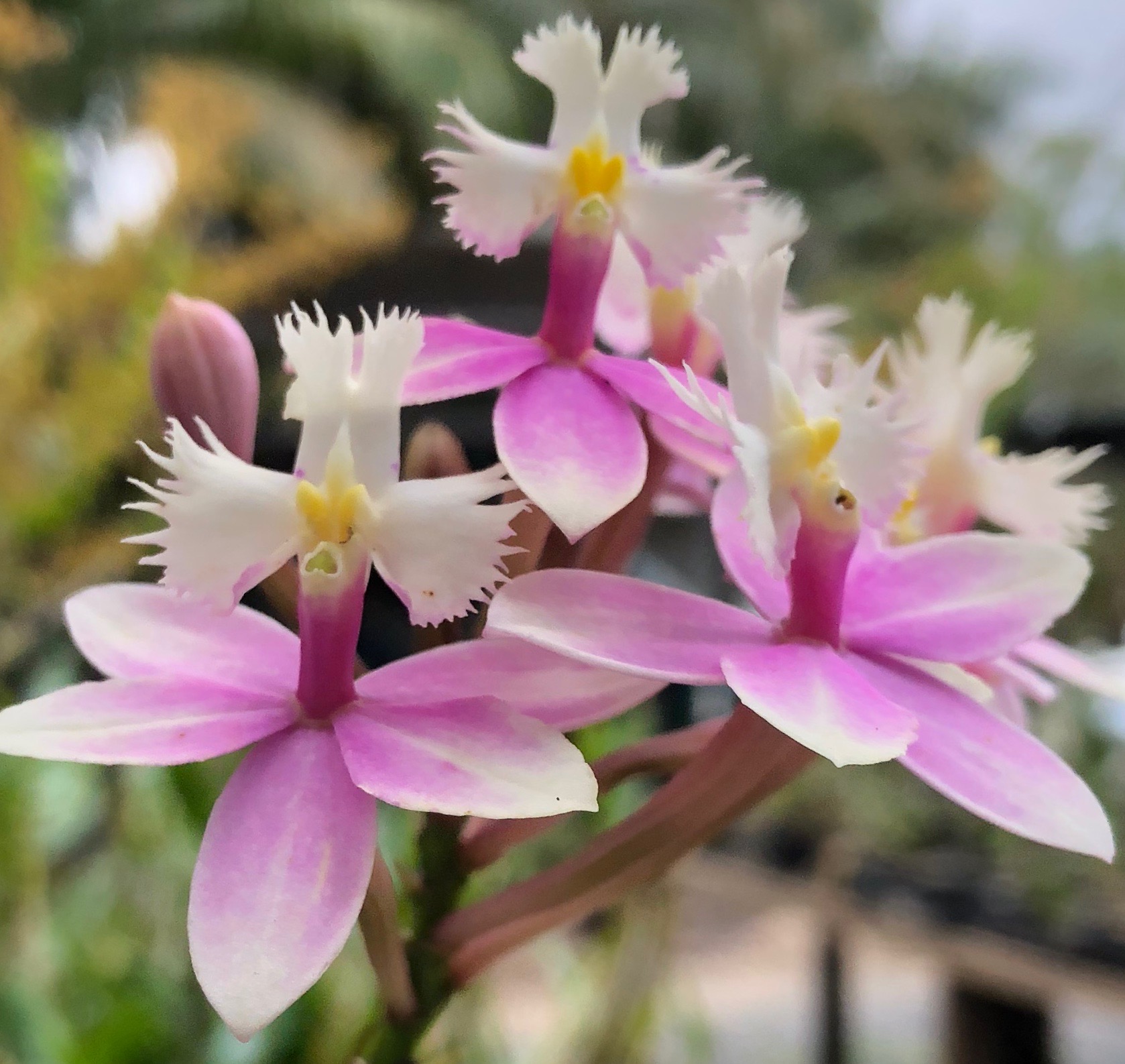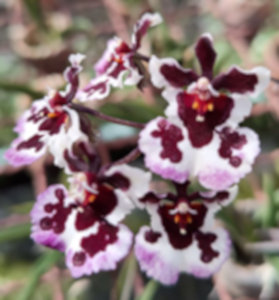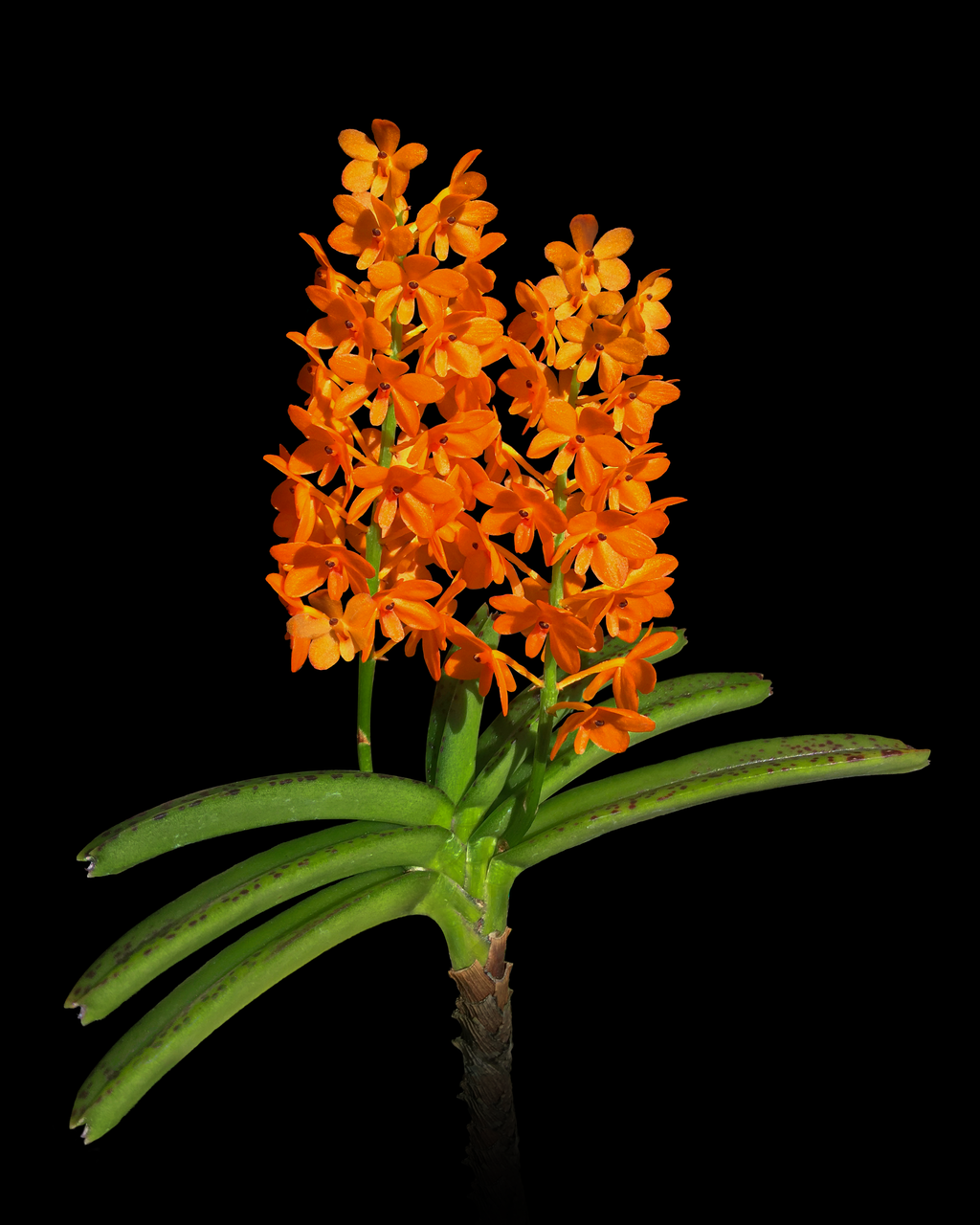Foliar feeding
Foliar feeding consists of spraying or pouring fertiliser over a plants’ leaves.
This method delivers nutrients via holes in a plants’ leaves called, stomata. Orchids have a mechanism called Crassulacean Acid Metabolism (CAM). This enables orchids to close their stomata to offset transpiration (loss of water) during the day and then re-open them at night. So typically foliar feeding is not a method used on plants with this mechanism.
However, some orchid species roots are easily accessible and as the science is incomplete regarding a orchids ability to switch between the CAM mechanism, foliar feeding, I believe, is beneficial and I’m a big fan.
I generally water my mounted orchids via a trigger spray. I will include some form of organic tonic or fertiliser and spraying can be a daily event and is tolerated well.
Compost teas and when available banana water, is good, although the banana water does bring ants. Banana water is rich in potassium. If I use an inorganic fertiliser I will choose one with a balanced NPK.
At flowering I will use a ‘flowering’ inorganic fertiliser which will typically contain higher levels of potassium. I use bloom buster, but I don’t think its available anymore. It is made by Manutec who also manufacture an orchid fertiliser, with a similar NPK, which I have used and is well tolerated at full strength.
I think a combination of an organic and inorganic fertilising regime is good. You can get quick results with inorganic fertilisers. It is easy to over fertilise with inorganic fertilisers and for potted plants it’s beneficial to flush out these salts occasionally.
Fertilising is wasteful if a plant is having a rest which some tropical genera do during the dry winter period. Be mindful of the time of the year as well as the needs of the specific orchid you are growing.
Solid fertiliser
Liquid fertilisers are the preferred way to fertilise orchids but organic/inorganic solid fertiliser can be used
Banana skins make a great fertiliser and contain potassium which is good for flowering. Dry the skins then place them into the nest (back) of a mounted orchid or chop them up first.
Terrestial orchids or potted orchids can also be fed with slow release organic/inorganic fertilisers. Chose one with a balanced NPK. You can use a pelletised manure but this can make your media wet. This can cause root rot so use sparingly. If using slow release pellets water them immediately after application.
This 4 part series is a brief explanation of a science based topic and like science knowledge grows every day.
The more you grow orchids the more your knowledge will grow.
CAM is a very interesting subject and this is a good primer
Be sure to check out my other articles in this series, here, here and here





One thought on “Part 4 Fertilising Orchids”